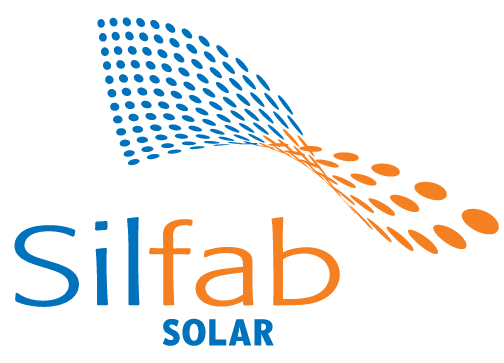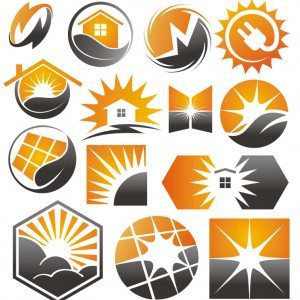 If you’ve been thinking about ways to save money on your home utility bills every month, the time may be right to work with a local company to convert your residence to solar power. By now, you’re probably aware that solar panels can save you money over standard electric bills, which have been increasing for the last 20 years at a national average of more than 5 percent per year. Studies show that in a 2,000 square-foot home, standard savings can be at least $25,000 over a 10 year period.
Not only can you realize a savings on your bills by going with solar, but you can possibly qualify for federal, state and/or local tax rebates and incentives that will save you even more money. Federal solar tax credits are still available through the end of 2016.
In addition to savings from government, some power companies offer rebates or credit for excess power sent back to them from consumers’ systems. You can check with your local utility company to see if this is the case for your area.
Solar power can lower your bills as well as create an ecologically-sustainable energy source for your home. That means less energy needs to be produced by local energy providers, which helps keep pollution out of the environment. That makes sense for your local region and the global community at large.
If you’ve been thinking about ways to save money on your home utility bills every month, the time may be right to work with a local company to convert your residence to solar power. By now, you’re probably aware that solar panels can save you money over standard electric bills, which have been increasing for the last 20 years at a national average of more than 5 percent per year. Studies show that in a 2,000 square-foot home, standard savings can be at least $25,000 over a 10 year period.
Not only can you realize a savings on your bills by going with solar, but you can possibly qualify for federal, state and/or local tax rebates and incentives that will save you even more money. Federal solar tax credits are still available through the end of 2016.
In addition to savings from government, some power companies offer rebates or credit for excess power sent back to them from consumers’ systems. You can check with your local utility company to see if this is the case for your area.
Solar power can lower your bills as well as create an ecologically-sustainable energy source for your home. That means less energy needs to be produced by local energy providers, which helps keep pollution out of the environment. That makes sense for your local region and the global community at large.
- Home
- Residential
- Commercial
- Tesla
- Testimonials
- About Us
- Contact Us
Category: Solar Power
 If you’ve been thinking about ways to save money on your home utility bills every month, the time may be right to work with a local company to convert your residence to solar power. By now, you’re probably aware that solar panels can save you money over standard electric bills, which have been increasing for the last 20 years at a national average of more than 5 percent per year. Studies show that in a 2,000 square-foot home, standard savings can be at least $25,000 over a 10 year period.
Not only can you realize a savings on your bills by going with solar, but you can possibly qualify for federal, state and/or local tax rebates and incentives that will save you even more money. Federal solar tax credits are still available through the end of 2016.
In addition to savings from government, some power companies offer rebates or credit for excess power sent back to them from consumers’ systems. You can check with your local utility company to see if this is the case for your area.
Solar power can lower your bills as well as create an ecologically-sustainable energy source for your home. That means less energy needs to be produced by local energy providers, which helps keep pollution out of the environment. That makes sense for your local region and the global community at large.
If you’ve been thinking about ways to save money on your home utility bills every month, the time may be right to work with a local company to convert your residence to solar power. By now, you’re probably aware that solar panels can save you money over standard electric bills, which have been increasing for the last 20 years at a national average of more than 5 percent per year. Studies show that in a 2,000 square-foot home, standard savings can be at least $25,000 over a 10 year period.
Not only can you realize a savings on your bills by going with solar, but you can possibly qualify for federal, state and/or local tax rebates and incentives that will save you even more money. Federal solar tax credits are still available through the end of 2016.
In addition to savings from government, some power companies offer rebates or credit for excess power sent back to them from consumers’ systems. You can check with your local utility company to see if this is the case for your area.
Solar power can lower your bills as well as create an ecologically-sustainable energy source for your home. That means less energy needs to be produced by local energy providers, which helps keep pollution out of the environment. That makes sense for your local region and the global community at large.
First Solar Panels Likely To Surpass p-type Crystallin Panels in performance by 2017
Written by goldensolar on . Posted in Solar Panels, Solar Power. Leave a Comment
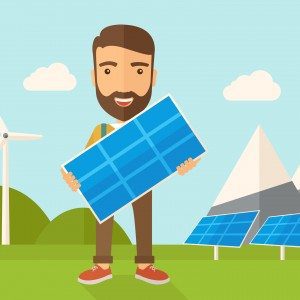 Solar panels have continued to improve in capacity, effectiveness and size since their early inception. While capacity and effectiveness remain top priorities for researchers and manufacturers alike, the ability to improve these elements while reducing the size and weight of the panels themselves remains important. Not only does this enable lower production and shipping costs, but it also increases the number of places where solar panels can be utilized safely and efficiently. One company that is continuing to make strides forward in this area is First Solar.
First Solar is a sector leader in thin film solar technology. Their existing panels are believed to be already outperforming multi-crystalline solar panels; being able to produce around 8% more energy on an annual basis. The effect of this improvement can be felt consumers in both the commercial and private sectors, with lower costs for you, the end user, including in relation to solar panel installation. However, the caveat at the moment is that this improved performance is only seen at temperatures higher than 25 °C.
Despite this, it is still understood that by the end of 2017, First Solar’s Cadmium Telluride thin film panels will consistently produce more power and generally perform better than p-type crystalline solar panels of comparable size. Understanding the importance of this step forward begins with understanding the difference between the two type of solar panels:
Solar panels have continued to improve in capacity, effectiveness and size since their early inception. While capacity and effectiveness remain top priorities for researchers and manufacturers alike, the ability to improve these elements while reducing the size and weight of the panels themselves remains important. Not only does this enable lower production and shipping costs, but it also increases the number of places where solar panels can be utilized safely and efficiently. One company that is continuing to make strides forward in this area is First Solar.
First Solar is a sector leader in thin film solar technology. Their existing panels are believed to be already outperforming multi-crystalline solar panels; being able to produce around 8% more energy on an annual basis. The effect of this improvement can be felt consumers in both the commercial and private sectors, with lower costs for you, the end user, including in relation to solar panel installation. However, the caveat at the moment is that this improved performance is only seen at temperatures higher than 25 °C.
Despite this, it is still understood that by the end of 2017, First Solar’s Cadmium Telluride thin film panels will consistently produce more power and generally perform better than p-type crystalline solar panels of comparable size. Understanding the importance of this step forward begins with understanding the difference between the two type of solar panels:
- A p-type multi-crystalline solar panel is comprised of raw silicon that has been melted and poured into molds; it is cost efficient when compared to monocrystalline products and produces less waste silicon in the manufacturing process. However, the efficiency of this solar power system means that large areas need to be covered to gain real advantage from solar energy.
- Using Cadmium Telluride in solar panels is highly cost efficient, due in part to the lower cost of the raw materials. Older versions of these panels were less effective than their crystalline counterparts and, therefore, more of them were needed for the same energy creation, which negated the initial cost savings. However, if the Cadmium Telluride thin film panels produced by First Solar can overcome this, then the way is open for them to become market leaders.
Comparing Energy Output
One of the major difficulties in comparing the energy output of the two types of solar panels is that they are manufactured in different sizes, and, therefore, are of different wattages; during the comparison, care needs to be taken to ensure that size as well as wattage and energy creation is taken into consideration. For example, an increase of 280 to 290 Watts is required for the First Solar panel system to have a higher power output than p-type multi-crystalline panels. It is believed that this will be achieved by the end of 2017. At the moment, just 6 crystalline solar panel manufacturers currently hold around 50% of the world market, and achieving the goal by the end of 2017 would allow First Solar to compete with the current dominant producers, namely in China.The Importance of Solar Panel Maintenance
Written by goldensolar on . Posted in Solar Maintenance, Solar Power. Leave a Comment
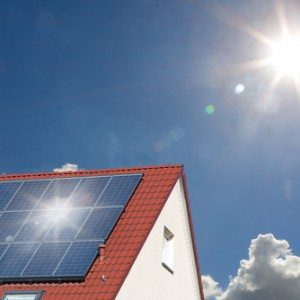 One of the beauties of solar power is that, once installed, solar panels require little maintenance throughout their rated lifetime. The initial startup cost of installation can be a deterrent for many homeowners, but in reality, the monthly energy savings pay back the installation costs relatively quickly. With limited maintenance costs, solar panels really are strong long-term investments.
In general, photovoltaic (PV) systems come with a 20-year warranty and a guarantee that the solar panels will continue to produce at least 80% of their rated power after the initial 20-year period. Solar panel durability has improved in lockstep with improvements in PV technology and manufacturing, however, so a solar panel produced after the year 2000 will only degrade by 0.4% a year. At this rate, it will retain 92% of its original efficiency after 20 years. Yet, even with this minimal degradation, there are some basic maintenance tasks that can be done to reduce the wear and tear on the panels and maintain high efficiency throughout the lifetime of the system.
Homeowners with solar panel installations should be primarily concerned with keeping the panels free of dirt and debris. This will be a bigger problem in systems with flat-lying panels, as opposed to those oriented at an angle. Anything that covers the panels will reduce the electrical output of the system, so it is important to not let some dust reduce the efficiency of the system. In most cases, simply spraying the solar panels with a hose will suffice, but you could also use a sponge on a pole to squeegee the panels and remove any stickier items, like bird droppings. Many solar companies also offer cleaning services and there are cleaning supplies available for purchase on the internet.
Similar to keeping the panels clear, it is important to ensure clear access to sunlight. Solar access could be impeded by overgrown vegetation or new structures, so always keep an eye on what’s happening south of the installation. It may be necessary to trim back some trees or talk to your neighbor so they don’t block your sunlight.
Solar panels are more susceptible in harsh climates, particularly those that experience heavy snowfall, strong winds, or frequent hail. If space and the angle of the panels permit, homeowners may consider erecting a buffer to protect the panels from the worst of the climate. Reducing the direct impact to the solar panels will extend their lifetime and improve efficiency.
There are other, rarer, things to look out for as well. Ideally, your solar panels will not much that can fall on them, but there could be instances when they are damaged by hail, or falling sticks, or a rogue cat. Keep an eye out for broken glass on the top of the panels; if there is broken glass the solar panel could be compromised and will need to be replaced.
One of the beauties of solar power is that, once installed, solar panels require little maintenance throughout their rated lifetime. The initial startup cost of installation can be a deterrent for many homeowners, but in reality, the monthly energy savings pay back the installation costs relatively quickly. With limited maintenance costs, solar panels really are strong long-term investments.
In general, photovoltaic (PV) systems come with a 20-year warranty and a guarantee that the solar panels will continue to produce at least 80% of their rated power after the initial 20-year period. Solar panel durability has improved in lockstep with improvements in PV technology and manufacturing, however, so a solar panel produced after the year 2000 will only degrade by 0.4% a year. At this rate, it will retain 92% of its original efficiency after 20 years. Yet, even with this minimal degradation, there are some basic maintenance tasks that can be done to reduce the wear and tear on the panels and maintain high efficiency throughout the lifetime of the system.
Homeowners with solar panel installations should be primarily concerned with keeping the panels free of dirt and debris. This will be a bigger problem in systems with flat-lying panels, as opposed to those oriented at an angle. Anything that covers the panels will reduce the electrical output of the system, so it is important to not let some dust reduce the efficiency of the system. In most cases, simply spraying the solar panels with a hose will suffice, but you could also use a sponge on a pole to squeegee the panels and remove any stickier items, like bird droppings. Many solar companies also offer cleaning services and there are cleaning supplies available for purchase on the internet.
Similar to keeping the panels clear, it is important to ensure clear access to sunlight. Solar access could be impeded by overgrown vegetation or new structures, so always keep an eye on what’s happening south of the installation. It may be necessary to trim back some trees or talk to your neighbor so they don’t block your sunlight.
Solar panels are more susceptible in harsh climates, particularly those that experience heavy snowfall, strong winds, or frequent hail. If space and the angle of the panels permit, homeowners may consider erecting a buffer to protect the panels from the worst of the climate. Reducing the direct impact to the solar panels will extend their lifetime and improve efficiency.
There are other, rarer, things to look out for as well. Ideally, your solar panels will not much that can fall on them, but there could be instances when they are damaged by hail, or falling sticks, or a rogue cat. Keep an eye out for broken glass on the top of the panels; if there is broken glass the solar panel could be compromised and will need to be replaced.Creative solar installations
Written by goldensolar on . Posted in Solar Panels, Solar Power. Leave a Comment
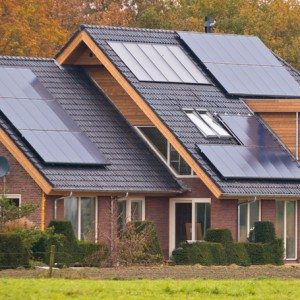 As the price of solar panels has dropped, solar power installations have grown in demand and have become more readily available to the public. The most common installations are, household photovoltaic (PV) systems, generally installed on rooftops or along the side of the house. However, as demand increases and more solar technologies enter the market, we are beginning to see more creative uses of solar panels. Here are a few examples that are expanding how we think about solar energy.
As the price of solar panels has dropped, solar power installations have grown in demand and have become more readily available to the public. The most common installations are, household photovoltaic (PV) systems, generally installed on rooftops or along the side of the house. However, as demand increases and more solar technologies enter the market, we are beginning to see more creative uses of solar panels. Here are a few examples that are expanding how we think about solar energy.
Water, as storage
A recently constructed housing development in Chiang Mai, Thailand, uses solar panels to power four family homes in the Phi Suea House development. The system is unique because it is the first known installation to use solar-powered hydrogen to store excess energy for use at night. The system will eventually generate about 441 kilowatt-hours of electricity during the day, and the excess energy will be stored in two lead-acid battery banks. The energy will be converted to hydrogen gas by an electrolyzer that applies an electrical current to water. The energy will be stored as gas and reconverted into electricity by fuel cells when the homes need more energy. This project is helping to expand how we think about energy storage, and is designed to be as ecologically friendly as possible; the only reported by-products of the system are oxygen and water.Solar-powered sports stadiums
Sporting events are far from carbon-neutral events, but some clubs around the world are trying to reduce their carbon footprint by developing solar-powered stadiums. The most impressive example comes from Taiwan, where the Dragon Stadium is powered completely by solar panels. The Dragon Stadium is a 40,000-seat facility that was built in 2009 for the World Games. It contains almost 9,000 rooftop solar panels, which generate enough power for over 3,000 lights and two giant screens. In the U.S., AT&T Park, home of baseball’s San Francisco Giants, has a 120-kilowatt array that powers the massive scoreboard in the outfield. The installation generates enough energy to light 40 family homes.Solar art
The sun has been a source of wonder and inspiration to humanity for centuries, and the recent developments in solar energy are driving a new wave of solar-inspired art. The first example also comes from the sports world. When the Washington, D.C., football team installed solar panels on the parking structures and main entrance at FedEx Field, they also installed a 30-foot “Solar Man” statue outside the stadium. Solar Man, primed and ready to throw the football, is constructed from thin-film solar panels that generate electricity for the stadium. The artist Sarah Hall has embraced another creative use of PV panels. Ms. Hall takes two panes of stained glass in a variety of textures, colors, and patterns, and installs a PV cell between the two panes. These windows can be fitted to any frame and the fun, colorful windows generate solar energy for the building they’re installed in.Converting Your Business to Solar Power
Written by goldensolar on . Posted in Green Living, Solar Power. Leave a Comment
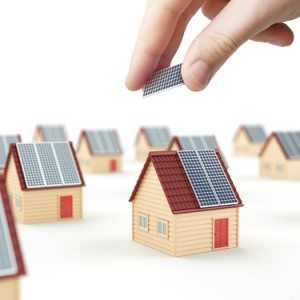 One of the biggest ways to help reduce consumption of fossil fuels and the emission of carbon is for businesses to find a way to scale back their use of electricity. Companies are among the largest consumers of electricity, and electricity accounts for a huge portion of the total oil and natural gas used in the United States, second only to automobiles. Needless to say, most businesses would find it difficult to operate without any sort of electrical power, but there are alternatives to the power grid. Solar power is among the best and most practical, especially for those trying to utilize it on a commercial, rather than city-wide scale.
Converting your business to solar power is not as challenging or expensive as you might assume. In fact, the most costly aspect is simply installing and maintaining the storage system for making use of your collected solar energy. Solar panels themselves are relatively inexpensive and they can last for years. Still, because they can lose some of their efficacy over time, they are typically warranted for about twenty years. Because each panel can only absorb so much energy, it is a good idea to install as many as possible on whatever surface areas you have available. You can even install reflectors around your panels to ensure that as much sunlight as possible is funneled into them.
The panels themselves are only one component of a solar power system that you will need to have installed. The inverters are equally important and often more expensive and troublesome. Inverters are the means by which solar energy is converted into useable electricity, so without them, solar power is of no use. Inverters do not last as long as solar panels and are not typically warranted for more than ten years. Maintaining your inverters is crucial to your business’s ability to make good use of the solar energy you collect.
Once collected, your solar energy will need to be stored in a battery. Batteries range in price from a few hundred to a few thousand dollars, depending on the variety. It is wise to invest in good batteries for your solar power system, especially if you intend to use solar energy as your primary source of electricity. While it is clear that investing in a solar power system is a costly endeavor, you can end up saving large sums of money in the long run. Not only will you reduce your consumption of electricity from the power grid, you may even receive substantial tax write-offs, depending on the laws in your state. Solar energy is the energy source of the future, and it can be as beneficial to your business as it is to the environment.
One of the biggest ways to help reduce consumption of fossil fuels and the emission of carbon is for businesses to find a way to scale back their use of electricity. Companies are among the largest consumers of electricity, and electricity accounts for a huge portion of the total oil and natural gas used in the United States, second only to automobiles. Needless to say, most businesses would find it difficult to operate without any sort of electrical power, but there are alternatives to the power grid. Solar power is among the best and most practical, especially for those trying to utilize it on a commercial, rather than city-wide scale.
Converting your business to solar power is not as challenging or expensive as you might assume. In fact, the most costly aspect is simply installing and maintaining the storage system for making use of your collected solar energy. Solar panels themselves are relatively inexpensive and they can last for years. Still, because they can lose some of their efficacy over time, they are typically warranted for about twenty years. Because each panel can only absorb so much energy, it is a good idea to install as many as possible on whatever surface areas you have available. You can even install reflectors around your panels to ensure that as much sunlight as possible is funneled into them.
The panels themselves are only one component of a solar power system that you will need to have installed. The inverters are equally important and often more expensive and troublesome. Inverters are the means by which solar energy is converted into useable electricity, so without them, solar power is of no use. Inverters do not last as long as solar panels and are not typically warranted for more than ten years. Maintaining your inverters is crucial to your business’s ability to make good use of the solar energy you collect.
Once collected, your solar energy will need to be stored in a battery. Batteries range in price from a few hundred to a few thousand dollars, depending on the variety. It is wise to invest in good batteries for your solar power system, especially if you intend to use solar energy as your primary source of electricity. While it is clear that investing in a solar power system is a costly endeavor, you can end up saving large sums of money in the long run. Not only will you reduce your consumption of electricity from the power grid, you may even receive substantial tax write-offs, depending on the laws in your state. Solar energy is the energy source of the future, and it can be as beneficial to your business as it is to the environment.




